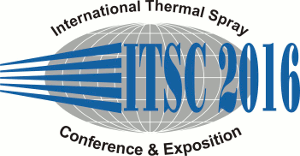| Abstract: |
Thermally sprayed aluminum (TSA) coatings provide long-term corrosion protection of offshore steel structures. Its low corrosion rate and its ability to protect steel by providing sacrificial protection in seawater has been exploited for decades. The corrosion rates are often calculated using linear polarisation technique. However, this technique does not give information regarding the mechanism of corrosion. Electrochemical Impedance Spectroscopy (EIS), on the other hand, is a technique that can give insight into the corrosion mechanism and help us understand the protective function of TSA when applied on carbon steel.
Commercially pure aluminium (>99.5wt% Al) was arc-sprayed on carbon steel. The corrosion potential of these samples when exposed to synthetic seawater was monitored, and EIS was also carried out. Corrosion rate was calculated using the pore network model. The corrosion potential was found to decrease initially, reach a minimum and then increase to values of -900mV after 5000 h in synthetic seawater at 35°C. The corrosion rate was calculated to be ~5-10µm/y after 5000 h of exposure. The mechanism of protection offered by TSA when damaged is also discussed.
|
|
